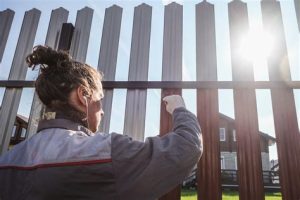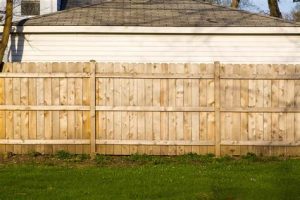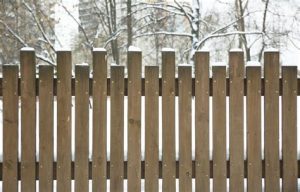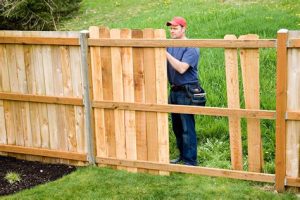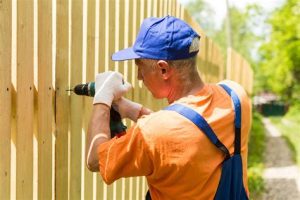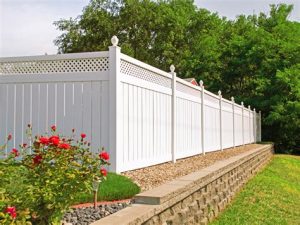Installing a fence is more than just a protective boundary for your property; it’s an investment in your space’s aesthetics and functionality. However, one crucial aspect often overlooked is the depth at which fence posts should be installed. Understanding how deep to install fence posts is essential for ensuring stability and durability, thus prolonging the life of your fence and safeguarding your investment. Factors such as soil type, weather conditions, and the specific purpose of the fence can dramatically influence the required depth. In this article, we’ll explore the significance of proper post installation and highlight best practices to help you achieve a secure and long-lasting fence. Whether you’re a DIY enthusiast or a seasoned professional, arming yourself with this knowledge will lead to better outcomes and fewer headaches down the line.
Understanding Soil Types Affects Post Depth Requirements
When planning your fence installation, one crucial aspect to consider is the type of soil in which you will be installing your fence post. Different soil types have varying characteristics that can significantly influence the depth at which you need to set your posts.
The soil can be categorized into several types, including clay, sandy, loamy, and gravelly soils. Each of these types reacts differently to moisture, temperature changes, and the weight of the fence. Understanding these variations is key to ensuring that your fence remains upright and secure for years to come.
- Clay Soil: Tends to hold moisture and can expand when wet. This soil may require deeper post installation to avoid heaving during freeze-thaw cycles.
- Sandy Soil: Drains quickly and may be less stable for holding posts. Posts set in sandy soil often need to be installed deeper to provide sufficient anchorage.
- Loamy Soil: A mix of clay, sand, and silt, loamy soil is generally ideal for fence posts. It offers good drainage and stability, but proper depth should still be maintained.
- Gravelly Soil: Similar to sandy soils, gravelly soils drain well but can also provide less stability. Posts may need to be set deeper to ensure they remain anchored.
Additionally, moisture levels and compaction can further impact soil stability. It’s important to assess the specific conditions of your site to determine the appropriate depth for post installation. By accounting for the type of soil, you can better ensure that your fence remains secure against natural elements and the test of time, answering the question of why is it crucial to get it right.
Why Is Proper Depth Crucial for Fence Stability
Determining the correct depth for fence post installation is essential for ensuring the overall stability and durability of the fence. When fence posts are set at the right depth, they can withstand various environmental factors such as wind, soil movement, and frost without compromising the integrity of the structure.
One of the primary reasons why why is proper depth crucial is that it allows the posts to resist lateral forces. A deeper post is less likely to sway or lean, thereby providing a sturdy base that supports the weight of the fencing material and any additional stresses it may encounter.
In addition, posts installed at the correct depth are better anchored, which reduces the likelihood of movement during adverse weather conditions. For example, as ground conditions change with moisture levels or temperature fluctuations, shallower posts may be more susceptible to shifting or even uprooting, leading to potential damage or failure of the fence.
Moreover, keep in mind that different types of fences may require specific installation depths based on their intended use and the materials involved. For instance, a chain-link fence may have different depth requirements compared to a wood privacy fence. Understanding these specifications ensures that you achieve long-lasting results.
| Fence Type | Recommended Depth |
|---|---|
| Wood Fence | 1/3 of the post above ground |
| Chain-Link Fence | 2-3 feet |
| Vinyl Fence | 1/3 of the post length |
Knowing why is proper depth crucial not only enhances the structural integrity of your fence but also extends its lifespan, minimizing future repair costs and ensuring that it effectively fulfills its intended purpose. By investing the time and effort into proper installation, you create a secure barrier that stands the test of time against environmental challenges.
Factors Influencing How Deep to Install Fence Post
When determining the appropriate depth for installing a fence post, there are several factors to consider that can influence your choice. Understanding these factors can ensure a sturdy, long-lasting fence. Here are the primary aspects that play a crucial role:
| Factor | Description |
|---|---|
| Soil Type | The density and moisture level of the soil affect how deep the post needs to be. Loose, sandy soil may require deeper posts compared to clay soil. |
| Climate | In areas with severe weather conditions, such as high winds or heavy snow, deeper post installations may be necessary for stability. |
| Fence Height | Taller fences need deeper posts to maintain balance and prevent tipping. A general rule of thumb is that the post should be one-third of the total height above ground. |
| Post Material | Different materials have varying weights and flexibilities, which can influence how deep they should be anchored in the ground. |
| Load Considerations | If the fence will support additional weight from accessories such as lights or climbing plants, deeper posts may be necessary. |
By considering these factors, you can ensure that you install your fence posts at the correct depth. This not only improves the structural integrity of your fence but also enhances its longevity, allowing you to avoid potential problems down the line.
The Consequences of Incorrect Fence Post Installation
Installing fence posts at the correct depth is essential for ensuring the longevity and stability of your fence. Failure to do so can lead to numerous issues that can affect the overall integrity of the structure. Below are some significant consequences of incorrect fence post installation:
- Instability: Posts that are not buried deep enough can shift or lean over time, leading to an unstable fence. This can be particularly problematic in areas with high winds or heavy snowfall.
- Rot and Decay: Incorrectly installed posts may not be adequately protected from moisture, increasing the risk of rot and decay. This can dramatically shorten the lifespan of your fence.
- Increased Maintenance Costs: If your fence requires frequent repairs due to improperly installed posts, the maintenance costs can add up over time, negating any initial savings from the incorrect installation.
- Safety Hazards: A leaning or unstable fence can pose safety hazards, especially if it falls over or collapses. This can be particularly dangerous in residential areas with children or pets.
- Compliance Issues: In some regions, local building codes may dictate how deep fence posts should be set. Failing to comply with these regulations can lead to fines or the need to reinstall posts correctly.
Understanding why is it important to have the correct post depth is crucial for avoiding these potential problems. Proper installation ensures that your fence is not only functional but also safe and long-lasting.
Best Practices for Determining Fence Post Depth
When embarking on the task of installing fence posts, following why is crucial to adhere to best practices is essential for ensuring the longevity and stability of your fence. Here are some key guidelines to consider:
- Understand Local Regulations: Before you start digging, check local building codes and regulations regarding fence installations. Some areas may have specific depth requirements.
- Consider the Type of Fence: Different types of fences (wood, vinyl, chain link) require varying depths due to their specific structural needs. It’s essential to tailor the installation to the type of material you are using.
- Evaluate Soil Conditions: As mentioned in previous sections, soil type plays a vital role in determining how deep to install fence posts. Soft or sandy soils may need deeper post holes, while rocky soils can allow for shallower installations.
- Use a Post Hole Digger: Employing the right tools like a post hole digger or auger can help create uniform holes, ensuring consistent depths across all posts.
- Consider Frost Depth: In cooler climates, your posts should be installed below the frost line to prevent heaving during freeze-thaw cycles. Research local frost depth guidelines to implement this factor.
- Depth Guidelines: A general rule of thumb is to bury at least one-third of the total height of the post. For example, if your fence post will be 6 feet tall, aim for a depth of 2 feet, taking into account the specific needs of your region and climate.
- Backfill with Concrete: For added stability, consider setting your posts in concrete. This creates a solid foundation that helps resist movement and shifting over time.
By following these best practices, you can ensure that your fence will remain stable and undisturbed for many years, making it clear why is this aspect so important in fence installation.
Frequently Asked Questions
Why is the depth of a fence post important?
The depth of a fence post is crucial for stability. A correctly installed post can withstand weather conditions and physical pressures without leaning or falling over.
What factors determine how deep a fence post should be installed?
Factors include the type of soil, the height of the fence, the local climate, and the type of material used for the fence.
What is the general guideline for fence post depth?
A common guideline is to install one-third of the post length above ground, so for a 6-foot fence, the post should be about 2 feet deep.
How does frost depth affect fence post installation?
In colder areas, it’s essential to install the post below the frost line to prevent heaving and ensure stability during freeze-thaw cycles.
What tools do I need to measure and install a fence post at the correct depth?
You’ll typically need a measuring tape, post hole digger or auger, level, and concrete mix (if using concrete for stabilization).
Can incorrect post depth affect the lifespan of my fence?
Yes, improperly installed posts can lead to issues such as leaning, damage from moisture, and ultimately a shorter lifespan for the entire fence.
Should I check local codes or regulations regarding fence post installation?
Absolutely. Local building codes may specify minimum requirements for fence construction and post depth, which can vary by location.
